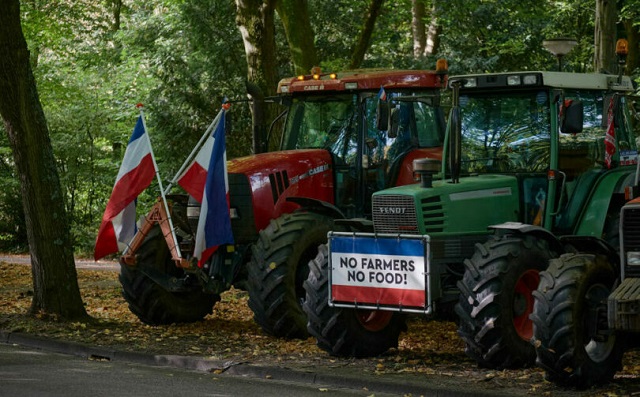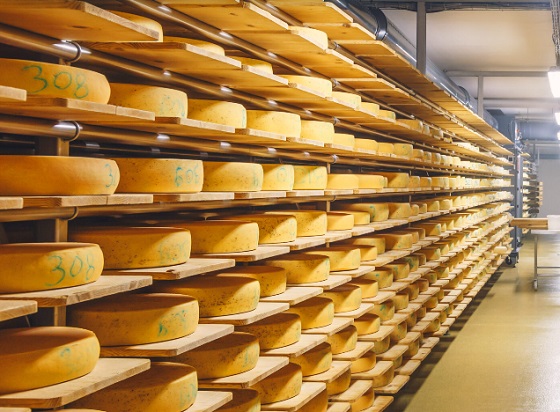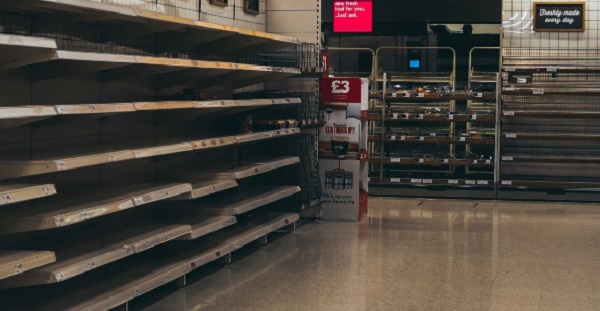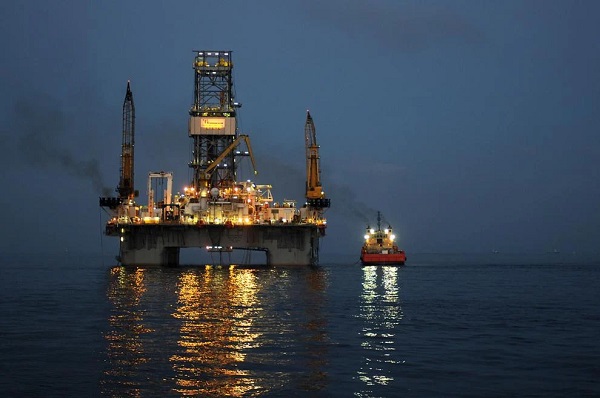Agriculture
New documentary ‘Nitrogen 2000’ exposes the Dutch government’s war on farmers

Tractors belonging to Dutch farmers are parked with protest boards and Dutch flags upside down on a road on the outskirts of The Hague on September 20, 2022, in The Hague, Netherlands
From LifeSiteNews
Ultimately, the documentary highlights a power struggle where fear and environmental narratives are used to justify land control, leaving farmers marginalized and resources controlled by a select few.
STORY AT-A-GLANCE
- Dutch cattle farmers own 70 percent of Holland, but the government is pushing for a forced buy out of 50 percent of their land, claiming it’s necessary to reduce pollution.
- Experts say the move to get rid of farmers isn’t about the environment but, rather, taking control of valuable land.
- The government’s computer models, which are used to support its plan to reduce nitrogen by buying up farmland, are based on a flawed assumption that nitrogen migrates from one field to the next.
- The push to remove farmers from their land is being driven by NGOs, which are primarily funded by the government, making them government extensions.
- A $25 billion government fund, created using taxpayers’ money, has been established to buy farmers’ land; once a farmer sells their land, they’ll be legally prohibited from establishing a farm anywhere else in Europe.
(Mercola) — Nitrogen 2000 is an important 45-minute documentary on the Dutch farmer struggle of 2019-23. Dutch cattle farmers own 70 percent of Holland, but in 2019, the government began pushing for a forced buyout of 50 percent of their land, claiming it’s necessary to reduce pollution. But for the approximately 60,000 farmers in the Netherlands, agriculture is a way of life, often passed down through the generations – one that’s necessary to supply food for the population.
According to a press release for the film, “Dutch farmers produce the most food per hectare of farmers anywhere, and the Netherlands is the world’s second largest exporter of agricultural products.”
Farms are interwoven into the fabric of their communities, such that “everyone, even if you live in the city like in Amsterdam or in Rotterdam, in a five-minute drive you will see cows, you will see farmland… it’s so ingrained in our society, in our way of life, that farmers are part of our culture. Everyone has someone in their family who was once a farmer,” says political commentator Sietske Bergsma.
But as professor Han Lindeboom, a marine ecologist at Wageningen University & Research, explains in the film, “The government has taken the stance that we have a huge problem with nature and that due to EU regulations we should save nature. And nowadays we want to solve that problem by simply eliminating a large amount of farms.”
The Dutch government claims it needs to nationalize half of cattle farmers’ land – an amount equal to about one-third of Holland – in order to reduce nitrogen, but experts say this plan is seriously flawed.
Is nitrogen really the problem?
Carbon and nitrogen have been declared environmental enemies by officials worldwide, prompting an array of restrictions. The U.N. has stated that nitrogen must be managed in order to save the planet, and nitrogen is described as “one of the most important pollution issues facing humanity.” Nitrogen not only is found in fertilizers, but it also makes up about 70 percent of air and is essential for plant growth.
“The nitrogen is only a problem for a few plants,” Lindeboom explains. “There are certain plants that don’t like it and they disappear. Other plants like it and they appear. So, basically what you’re doing is changing nature.”
“They have declared that nitrogen is the major problem,” Lindeboom, an adviser to NIOZ, the Royal Netherlands Institute for Sea Research, continues in the press release. “Well, I am an expert in nitrogen and I dare to say it is not.” According to Lindeboom, the government’s computer models, which are used to support its plan to buy up farmland, are based on a flawed assumption that nitrogen migrates from one field to the next.
The EU is also the site of the largest network of protected areas globally, an area known as Natura 2000, which covers 18 percent of EU land. In Holland alone, there are 162 Natura 2000 areas. In 118 of them, it’s said there are organisms living that don’t like too much nitrogen.
“In 2021, the European Union’s Natura 2000 network released a map of areas in the Netherlands that are now protected against nitrogen emissions. Any Dutch farmer who operates their farm within 5 kilometers of a Natura 2000 protected area would now need to severely curtail their nitrogen output, which in turn would limit their production,” Roman Balmakov, Epoch Times reporter and host of “Facts Matter,” says.
Government forcing out farmers
Many Dutch farmers are now facing the loss of their farms over the controversial nitrogen rules. Farmer Jos Block says:
We have a lot of problems with the nitrogen rules because our farm is near to and in Natura 2000. And that is really a problem for us. This is my land. I’m the owner. But this is also a nature land, the Natura 2000. In this area, the government says we need to reduce 95% of the nitrogen that’s coming out of the stables.
But experts, including Lindeboom, say this is “absolutely not necessary to save nature” and the government is “picking on farmers much too much.” Dutch dairy farmer Nynke Koopmans with the Forum for Democracy is among those who believe the nitrogen problem is made up.
“It’s one big lie,” she says. “The nitrogen has nothing to do with environment. It’s just getting rid of farmers.” Another farmer said if new nitrogen rules go into effect, he’d have to reduce his herd of 58 milking cows down to six. Nitrogen scientist Jaap C. Hanekamp, Ph.D., was working for a government committee to study nitrogen, tasked with analyzing the government’s nitrogen model. He told Balmakov:
The whole policy is based on the deposition model about how to deal with nitrogen emissions on nature areas. And I looked at the validation studies and show that the model is actually crap. It doesn’t work. And doesn’t matter. They still continue using it. Which is, in a sense, unsettling. I mean, really, can we do such a thing in terms of policy? Use a model which doesn’t work? It’s never about innovation, it’s always about getting rid of farmers.
The Dutch government has been gradually tightening its grasp on farmers for some time. Every year, farmers must report details about the number of cows they farm and how many they plan to have in the future. The government also dictates what types of crops farmers grow and requires complicated and expensive manure testing for phosphates and ammonia, driving up farmers’ costs and reducing their income.
Government-funded NGOs are lobbying to get rid of farmers
The push to remove farmers from their land is being driven by NGOs, which are primarily funded by the government, making them government extensions. A $25 billion government fund, created using taxpayers’ money, has also been established to buy farmers’ land.
Once a farmer sells their land, they’ll be legally prohibited from establishing a farm anywhere else in Europe. Meanwhile, the NGOs may even end up farming the land once they’ve pushed the farmer out of the picture. According to the film’s press release:
NGOs – namely Dierenbescherming, Varkens in Nood, Greenpeace, Vogelbescherming, Natuurmonumenten – are the primary organizations lobbying for the nitrogen policy. Their budget is funded by the Dutch government. Once a farmer is bought out, the NGOs become custodians of the land and, in some cases, put cows back on the land to manage it.
Commenting on this policy, farmer Bolk said, ‘I do the same as the nature organizations in Holland… I think it’s very strange that a farmer is not allowed to do it but a nature organization can do the same as I do and then there is no nitrogen problem.’
The real agenda, however, may be traced back to the Club of Rome, a think tank that aligned with neo-malthusianism – the idea that an overly large population would decimate resources – and was intending to implement a global depopulation agenda.
“They came up with this incredible document where they actually said, ‘We need a new justification for this all-powerful state,’” international journalist Alex Newman says. “So, the new excuse is going to be because the environment is going to be harmed and because climate is going to hurt us.” Balmakov continues:
I could not believe what I just heard, that world leaders really laid out this globalist plan in plain English in a physical book, way back in 1991. I went on Amazon. And there it was.
‘The First Global Revolution,’ which states, and I quote, ‘In searching for a common enemy to unite us, we came up with the idea that pollution, the threat of global warming, water shortages, famine, and the like, would fit the bill. And therefore, the real enemy is humanity itself.’
In its quest to reduce nitrogen, the Dutch government is targeting farmers, not industry, such as brick factories, which also produce nitrogen to build new houses. The reason, many believe, lies in the land itself.
Is the nitrogen crisis a cover for land control?
Innovative farming methods and changes in food can reduce livestock emissions. But even when farmers have told the government they’d get rid of their cows – just not their land – the government refused.
“Under the guise of democracy and liberalism, they are taking away rights,” political commentator Sietske Bergsma says. “And most people are fine with it because they feel this sort of responsibility – maybe because it’s so ‘progressive’ to care about the climate – so they’re willing to actually sacrifice their own well-being.”
The narrative is based on fear and telling people what they must do in order to be safe. “We’ve paid a really high price for this because we gave up all our freedoms to feel safe,” Bergsma adds. “And obviously this safety is also very fake because you can’t be safe without being free. It’s not about saving the planet. It’s about government control because that’s in effect what is happening.”
Once the farmers are pushed out, globalists suggest eating bugs will protect the planet by eliminating the need for livestock, cutting down on agricultural land use and protecting the environment. The U.N.’s Food and Agriculture Organization also encourages the consumption of insects and insect-based foods, and the momentum to get farmers off their land is continuing to gain steam.
In 2023, the European Commission approved two Dutch schemes to buy out farmers’ land. While some farmers staged protests against the plans to reduce nitrogen emissions, more than 750 Dutch farmers had signed up for the buy-out scheme as of November 2023, with about 3,000 expected to be eligible for the program. Similar programs are also being discussed in Canada, Ireland, and the U.S. But ultimately, as environmental journalist Rypke Zeilmaker explains:
It’s not about nature protection. Only the ones who, in this process, have acquired the most money will have the ruling power. It comes down to control of resources in the hands of the few. Look at the power of the NGOs. Who do they really support? Who’s pumping money into them? It’s always governments and billionaires doing it…
So, this is the relation between government and NGOs. To an extent you can sell the public. You can buy the public opinion… It’s all about fear. It’s about making people fear for the future so that they would agree with policies that, if they are sober, they would never agree with.
Reprinted with permission from Mercola.
Agriculture
The Climate Argument Against Livestock Doesn’t Add Up

From the Frontier Centre for Public Policy
Livestock contribute far less to emissions than activists claim, and eliminating them would weaken nutrition, resilience and food security
The war on livestock pushed by Net Zero ideologues is not environmental science; it’s a dangerous, misguided campaign that threatens global food security.
The priests of Net Zero 2050 have declared war on the cow, the pig and the chicken. From glass towers in London, Brussels and Ottawa, they argue that cutting animal protein, shrinking herds and pushing people toward lentils and lab-grown alternatives will save the climate from a steer’s burp.
This is not science. It is an urban belief that billions of people can be pushed toward a diet promoted by some policymakers who have never worked a field or heard a rooster at dawn. Eliminating or sharply reducing livestock would destabilize food systems and increase global hunger. In Canada, livestock account for about three per cent of total greenhouse gas emissions, according to Environment and Climate Change Canada.
Activists speak as if livestock suddenly appeared in the last century, belching fossil carbon into the air. In reality, the relationship between humans and the animals we raise is older than agriculture. It is part of how our species developed.
Two million years ago, early humans ate meat and marrow, mastered fire and developed larger brains. The expensive-tissue hypothesis, a theory that explains how early humans traded gut size for brain growth, is not ideology; it is basic anthropology. Animal fat and protein helped build the human brain and the societies that followed.
Domestication deepened that relationship. When humans raised cattle, sheep, pigs and chickens, we created a long partnership that shaped both species. Wolves became dogs. Aurochs, the wild ancestors of modern cattle, became domesticated animals. Junglefowl became chickens that could lay eggs reliably. These animals lived with us because it increased their chances of survival.
In return, they received protection, veterinary care and steady food during drought and winter. More than 70,000 Canadian farms raise cattle, hogs, poultry or sheep, supporting hundreds of thousands of jobs across the supply chain.
Livestock also protected people from climate extremes. When crops failed, grasslands still produced forage, and herds converted that into food. During the Little Ice Age, millions in Europe starved because grain crops collapsed. Pastoral communities, which lived from herding livestock rather than crops, survived because their herds could still graze. Removing livestock would offer little climate benefit, yet it would eliminate one of humanity’s most reliable protections against environmental shocks.
Today, a Maasai child in Kenya or northern Tanzania drinking milk from a cow grazing on dry land has a steadier food source than a vegan in a Berlin apartment relying on global shipping. Modern genetics and nutrition have pushed this relationship further. For the first time, the poorest billion people have access to complete protein and key nutrients such as iron, zinc, B12 and retinol, a form of vitamin A, that plants cannot supply without industrial processing or fortification. Canada also imports significant volumes of soy-based and other plant-protein products, making many urban vegan diets more dependent on long-distance supply chains than people assume. The war on livestock is not a war on carbon; it is a war on the most successful anti-poverty tool ever created.
And what about the animals? Remove humans tomorrow and most commercial chickens would die of exposure, merino sheep would overheat under their own wool and dairy cattle would suffer from untreated mastitis (a bacterial infection of the udder). These species are fully domesticated. Without us, they would disappear.
Net Zero 2050 is a climate target adopted by federal and provincial governments, but debates continue over whether it requires reducing livestock herds or simply improving farm practices. Net Zero advocates look at a pasture and see methane. Farmers see land producing food from nothing more than sunlight, rain and grass.
So the question is not technical. It is about how we see ourselves. Does the Net Zero vision treat humans as part of the natural world, or as a threat that must be contained by forcing diets and erasing long-standing food systems? Eliminating livestock sends the message that human presence itself is an environmental problem, not a participant in a functioning ecosystem.
The cow is not the enemy of the planet. Pasture is not a problem to fix. It is a solution our ancestors discovered long before anyone used the word “sustainable.” We abandon it at our peril and at theirs.
Dr. Joseph Fournier is a senior fellow at the Frontier Centre for Public Policy. An accomplished scientist and former energy executive, he holds graduate training in chemical physics and has written more than 100 articles on energy, environment and climate science.
Agriculture
End Supply Management—For the Sake of Canadian Consumers

This is a special preview article from the:
U.S. President Donald Trump’s trade policy is often chaotic and punitive. But on one point, he is right: Canada’s agricultural supply management system has to go. Not because it is unfair to the United States, though it clearly is, but because it punishes Canadians. Supply management is a government-enforced price-fixing scheme that limits consumer choice, inflates grocery bills, wastes food, and shields a small, politically powerful group of producers from competition—at the direct expense of millions of households.
And yet Ottawa continues to support this socialist shakedown. Last week, Prime Minister Mark Carney told reporters supply management was “not on the table” in negotiations for a renewed United States-Mexico-Canada Trade Agreement, despite U.S. negotiators citing it as a roadblock to a new deal.
Supply management relies on a web of production quotas, fixed farmgate prices, strict import limits, and punitive tariffs that can approach 300 percent. Bureaucrats decide how much milk, chicken, eggs, and poultry Canadians farmers produce and which farmers can produce how much. When officials misjudge demand—as they recently did with chicken and eggs—farmers are legally barred from responding. The result is predictable: shortages, soaring prices, and frustrated consumers staring at emptier shelves and higher bills.
This is not a theoretical problem. Canada’s most recent chicken production cycle, ending in May 2025, produced one of the worst supply shortfalls in decades. Demand rose unexpectedly, but quotas froze supply in place. Canadian farmers could not increase production. Instead, consumers paid more for scarce domestic poultry while last-minute imports filled the gap at premium prices. Eggs followed a similar pattern, with shortages triggering a convoluted “allocation” system that opened the door to massive foreign imports rather than empowering Canadian farmers to respond.
Over a century of global experience has shown that central economic planning fails. Governments are simply not good at “matching” supply with demand. There is no reason to believe Ottawa’s attempts to manage a handful of food categories should fare any better. And yet supply management persists, even as its costs mount.
Those costs fall squarely on consumers. According to a Fraser Institute estimate, supply management adds roughly $375 a year to the average Canadian household’s grocery bill. Because lower-income families spend a much higher proportion of their income on food, the burden falls most heavily on them.
The system also strangles consumer choice. European countries produce thousands of varieties of high-quality cheeses at prices far below what Canadians pay for largely industrial domestic products. But our import quotas are tiny, and anything above them is hit with tariffs exceeding 245 percent. As a result, imported cheeses can cost $60 per kilogram or more in Canadian grocery stores. In Switzerland, one of the world’s most eye-poppingly expensive countries, where a thimble-sized coffee will set you back $9, premium cheeses are barely half the price you’ll find at Loblaw or Safeway.
Canada’s supply-managed farmers defend their monopoly by insisting it provides a “fair return” for famers, guarantees Canadians have access to “homegrown food” and assures the “right amount of food is produced to meet Canadian needs.” Is there a shred of evidence Canadians are being denied the “right amount” of bread, tuna, asparagus or applesauce? Of course not; the market readily supplies all these and many thousands of other non-supply-managed foods.
Like all price-fixing systems, Canada’s supply management provides only the illusion of stability and security. We’ve seen above what happens when production falls short. But perversely, if a farmer manages to get more milk out of his cows than his quota, there’s no reward: the excess must be
dumped. Last year alone, enough milk was discarded to feed 4.2 million people.
Over time, supply management has become less about farming and more about quota ownership. Artificial scarcity has turned quotas into highly valuable assets, locking out young farmers and rewarding incumbents.
Why does such a dysfunctional system persist? The answer is politics. Supply management is of outsized importance in Quebec, where producers hold a disproportionate share of quotas and are numerous enough to swing election results in key ridings. Federal parties of all stripes have learned the cost of crossing this lobby. That political cowardice now collides with reality. The USMCA is heading toward mandatory renegotiation, and supply management is squarely in Washington’s sights. Canada depends on tariff-free access to the U.S. market for hundreds of billions of dollars in exports. Trading away a deeply-flawed system to secure that access would make economic sense.
Instead, Ottawa has doubled down. Not just with Carney’s remarks last week but with Bill C-202, which makes it illegal for Canadian ministers to reduce tariffs or expand quotas on supply-managed goods in future trade talks. Formally signalling that Canada’s negotiating position is hostage to a tiny domestic lobby group is reckless, and weakens Canada’s hand before talks even begin.
Food prices continue to rise faster than inflation. Forecasts suggest the average family will spend $1,000 more on groceries next year alone. Supply management is not the only cause, but it remains a major one. Ending it would lower prices, expand choice, reduce waste, and reward entrepreneurial farmers willing to compete.
If Donald Trump can succeed in forcing supply management onto the negotiating table, he will be doing Canadian consumers—and Canadian agriculture—a favour our own political class has long refused to deliver.
The original, full-length version of this article was recently published in C2C Journal. Gwyn Morgan is a retired business leader who was a director of five global corporations.
-

 armed forces1 day ago
armed forces1 day agoRemembering Afghanistan and the sacrifices of our military families
-

 Fraser Institute1 day ago
Fraser Institute1 day agoHow to talk about housing at the holiday dinner table
-

 Frontier Centre for Public Policy1 day ago
Frontier Centre for Public Policy1 day agoTent Cities Were Rare Five Years Ago. Now They’re Everywhere
-

 Opinion1 day ago
Opinion1 day agoPope Leo XIV’s Christmas night homily
-

 Fraser Institute19 hours ago
Fraser Institute19 hours agoCarney government sowing seeds for corruption in Ottawa
-

 Alberta19 hours ago
Alberta19 hours agoAlberta Next Panel calls for less Ottawa—and it could pay off
-

 Business6 hours ago
Business6 hours agoSocialism vs. Capitalism
-

 Energy19 hours ago
Energy19 hours agoWhile Western Nations Cling to Energy Transition, Pragmatic Nations Produce Energy and Wealth









